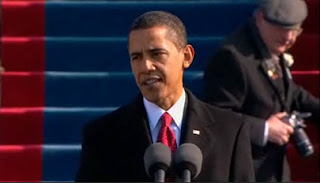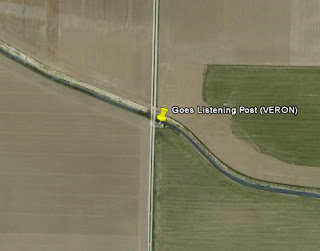
I think we're witnessing an end of an era with the departure of
Nigel Chapman as Director of BBC World Service. He's been there at WS since 2000 and will probably be best known for his renewal plan for the world's largest international broadcaster, shift resources away from radio and putting them into more cross-platform offering. He brought focus by trimming the number of languages and reducing services that had little or no audience - or had outstayed their original purposes. You cannot run a network on nostalgia.
Chapman succeeded in writing and implementing his
plan for renewing the BBC World Service, so I guess that now the mission laid out in the document is accomplished, it is a good time to move on. It's also a golden opportunity for the BBC World Service to make a break in tradition. It would be refreshing if the opening speech from the next director was from someone with a British-Commonwealth heritage and that she could build the next stage of the World Service strategy. Time for change at the Beeb too.
The Chapman
strategy starts to expire in 2010, by which time a lot of purely radio thinking will already be severely marginalised to a point where the "broadcast" over-the-air distribution model is too expensive. Biting the bullet, we can conclude that digital radio DRM has failed after 13 years of struggle - no receivers, no serious interest from the commercial radio sector and so no point in going it alone. The DRM experiment on 1296 kHz generates more heat than listeners.
Audiences of 180 million who listen once a week sounds huge. But that means 6.6 billion people do
not listen to the BBC World Service, so there's still a long way to go. International broadcast, being a niche sector, is evolving from public broadcast into a public access model. The BBC creates a wealth of content and offers a selection of it for people to access via the web, IP devices, mobile, etc. In areas of the world where there is limited access, for politicial or technical reasons, there is still a role for the BBC to compile selections of this content and broadcast them directly to audiences using any relevant technology, including analogue AM in some cases.
I recently discovered some 30-25 year old tapes of BBC World Service from the days when it was a full service network, rather than the world news service that it has become. The presentation sounds slow by comparison these days, but it was right for its day. They ran comedy shows like Just a Minute - even special versions of Weekending (a topical parody on the week's news - like rolling the NewsQuiz and Dead Ringers into one). Continuity added comments about the weather in London - and it was a shared experience with listeners everywhere. Especially since 9/11, the smile has gone from World Service radio in English, it is the serious person's information network. Which is why I can only take so much death and disaster in small doses. Thank goodness for the BBC i-Player or wi-fi radio and the access these bring to the much broader range of features from BBC domestic networks - including brilliant comedy, debate, and music. The Mac has a great program called Radiocast which allows you build your own "World Service" mixing and mashing radio shows broadcast from anywhere in the world and recording it to a hard-disk for listening later on demand. I know my way around the sites, it's shame BBC WS doesn't guide others.
World Service radio news shows themselves are in danger in being eclipsed in many markets by BBC World News TV which adds things that are useful while travelling. There's never any weather or travel info on BBC WS Radio. And the radios in hotels were a myth in most cases. Show me the businessman/woman who listens to the radio rather than watch TV in a foreign hotel.
BBC World News TV is still in denial - that one day they will make a real commercial business out of it. No chance at all, especially when the ad market for those kind of networks in miniscule. BBC Arabic has an advantage because its a three platform offering. BBC WS Radio is hampered by restrictions on cross-promotion which could be fatal in a cross-media world. Now that the BBC News international site is ad funded, WS radio is becoming an island, surrounded by a sea of on-line and video offering, none of which can be connected because of funding rules from a bygone era.
So the next WS Director will have to move from a cross-platform strategy to a
cross-media strategy, or great audio/radio that WS is currently making will simply disappear in the media background noise. It is not being labelled, so it will not be found. Try and find something that has been broadcast on the World Today or Newshour earlier in the week. It would be a shame if some features were buried because some World Service programmes, like Digital Planet or several BBC WS Science shows, should also be on Radio 4 or other intelligent speech feeds. If it works for In Business, then it works for other genres.
On the TV front, I hope BBC World News will review its on-line programme line-up, allowing on-line access to BBC domestic news productions like Newsnight and Panorama. I can understand restrictions on drama and comedy series, not on news programmes. Find a way to cross promote with WS Radio breaking the current information apartheid. That means building channels in the iPlayer for non-UK residents - and experimenting with subscription models.
The procedure for Chapman's replacement has been muddled, crazy at a time when BBC has had serious management issues at the top and cannot seem to react fast enough to simple transparency issues. The Daily Telegraph
picked up the rumour about the post not being advertised externally. Then there was the
letter from (ex)-BBC staffers - including former Director John Tusa - demanding that the job be thrown open to external candidates. In the end it was - but the window of opportunity is so short, I suppose they already know who they want. The
job description is strange reading in many countries, since editorial responsibility is mixed with financial and strategic responsibility towards government - in short the job is becoming a mission impossible. And there seems to be huge overlap with the responsibilities of Richard Sambrook, to whom the WS Director has to report. To restore credibility, the function needs to create the workspace and platform for a world class cross-media news network - but the editorial responsibility should rest with Sambrook - a bit like the DG and Deputy DG roles they created domestically for Mark Thompson and Mark Byford.
Applications close for the DG post on January 25th. I wonder if the board will find the right woman for the job? Now that really would be World News.









